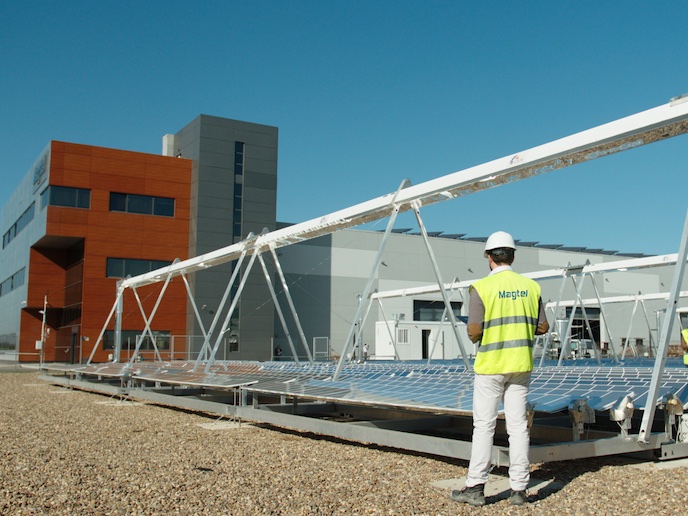New materials help tap potential of solar power
A concentrated solar power(opens in new window) (CSP) plant uses mirrors to reflect sunlight towards a centralised receptor. Inside this receptor is a material – usually a liquid though sometimes a gas – that is heated by this concentrated solar energy. “What is interesting about a CSP plant is that you can obtain two energy vectors – heat and electricity (with the addition of a turbine),” explains IN-POWER(opens in new window) project technical coordinator Monica Della, energy conversion and photonics manager at LEITAT(opens in new window) (website in Spanish), Spain. “This can be advantageous, as sometimes you only need heat.” In contrast, solar panel photovoltaic(opens in new window) (PV) technology only generates electricity and converting electricity into heat can be inefficient. “Another point is that CSP plants can fine-tune temperatures,” says Della. “Temperatures of between 100 and 200 degrees Celsius are commonly used in industries such as food and beverage, to eliminate contaminants in pasteurisation processes.” Heavy industries and chemicals meanwhile, which often operate at extremely high temperatures, can use CSP to heat processes up to 400 and 500 degrees Celsius.
New composite materials
The potential is there. For CSP technology to really take off however, there needs to be buy-in from industry. “Our idea for the IN-POWER project was to reduce costs and achieve operational efficiencies,” says Della. These results would then be demonstrated at a scaled-up pilot plant in the south of Spain. The project team began by looking at using cheaper, lighter materials to construct the mirrors and supporting structures. “CSP mirrors tend to be the same as you’d find in your bathroom – glass with an aluminium layer behind,” she notes. “The problem is that these are quite heavy. In order to move the mirrors to catch the sun, you need a lot of power.” To address this, new composite materials were developed. These helped to significantly reduce the overall weight and footprint of the structure, while highly reflective polymer materials, treated with anti-soiling coatings, were used to develop next-generation mirrors. “We also focused on heat storage,” remarks Della. “This is a key point. If a plant can store heat efficiently, then it can operate 24 hours a day.” For this, the project team developed an efficient thermal storage system, again by using innovative new composite materials. The size of the solar heat tanks was significantly reduced, and far less escaped heat was recorded due to a new absorber light coating.
Demonstrating industrial feasibility
In the second half of the project, these innovations were brought together in a pilot plant. This plant enabled the team to study the performance of the new materials – the mirrors, structures and coatings – and to demonstrate to industry the feasibility of the technology. “The pilot plant is almost like a showroom, as it enables us to show the technology to possible customers,” explains Della. “Two or three beverage companies have already expressed an interest.” Though the project finished earlier this year, the pilot plant remains operational. “We want to continue the pilot for several years, to demonstrate the lifetime of the components,” she adds. “These are very new materials, so we have to convince industry that these are viable.” Another avenue of opportunity is the creation of new geometries using the flexible polymer mirroring materials. New designs could lead to new applications. Hybrid CSP-PV plants are another possibility. “This pilot plant will remain open to research, and for future projects,” Della concludes.







